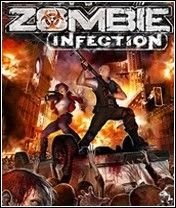

Estimates in 2003 were of ≈50,000 book clubs in Britain and ≈500,000 in the United States ( 2). The aim of these meetings is to engage scientists and nonscientists in discussions about epidemiology and infection and to consider what the texts tell us about our perception of science and its advances.īook clubs, or reading groups, have increased in popularity since the late 1990s. This reading group meets every 2 months to discuss works of literary fiction from any genre that features infectious disease. Join thousands already receiving our daily newsletter.The Bad Bugs Book Club ( ) was established in 2009 ( 1). She has taught about disaster preparation and response for the past 16 years and is a board-certified national health care disaster professional. London Draper Lowe is a professor at Weber State University’s Annie Taylor Dee School of Nursing, which will celebrate its 70th anniversary next year. Gooder and I encourage our students to live by the motto, “If you’re prepared for the zombie apocalypse, then you’re prepared for any event!”Īs of this year, more than 2,400 Weber State nursing graduates have been trained to prepare for and respond to times of crisis - nurses who have since gone on to strengthen the communities in which they serve, both in Utah and beyond.ĭr. Adopted from the CDC’s preparedness campaign, Dr. As a part of the course, students build or revise their own 72-hour kits and formulate preparedness plans for themselves and their loved ones. In response to 9/11, this course was developed to prepare nurses to respond effectively to bioterrorism, infectious disease and natural disasters, as well as explosive, radiological and chemical events. Gooder and I have team-taught a baccalaureate-level disaster nursing course. Here at Weber State, the Annie Taylor Dee School of Nursing is no stranger to disaster preparedness.

The CDC and American Red Cross both echo similar guidance via cdc.gov/disasters/psa/emergency-kit.html and /get-help/how-to-prepare-for-emergencies.html. For example, the Department of Homeland Security provides information and guides via /september, and Utah mirrors these efforts via. There are a variety of resources to help community members prepare. Preparing for disasters can be expensive, so a helpful tip is to start with what you have and build from there - a little bit at a time.

Many of us are tired of even thinking about disasters after slogging through more than two years of COVID-19, but NOW is the time! It’s easy to become apathetic to staying constantly prepared because it takes continual effort. The irony of disaster preparedness is that you’re preparing for an event you hope will never occur. Activities throughout the month encourage individuals and families to make a plan, build a kit and become informed on effective ways to prepare for any type of disaster, whether natural or manmade. September is National Preparedness Month. But if anything has become clear, it’s the importance of being ready for whatever might lie ahead. At the time, neither of us could have predicted how crucial the timing of these plans would be in responding to the COVID-19 pandemic in Northern Utah.Ī lot has changed in our world over the last three years. Health care PODs are community locations set up in partnership with local health departments to dispense medical countermeasures such as vaccines, anti-toxins, antibiotics and antivirals should a disaster or terrorist event occur. Gooder had been working intently to develop a Point of Dispensing agreement between Weber State University and the Weber-Morgan Health Department.


 0 kommentar(er)
0 kommentar(er)
